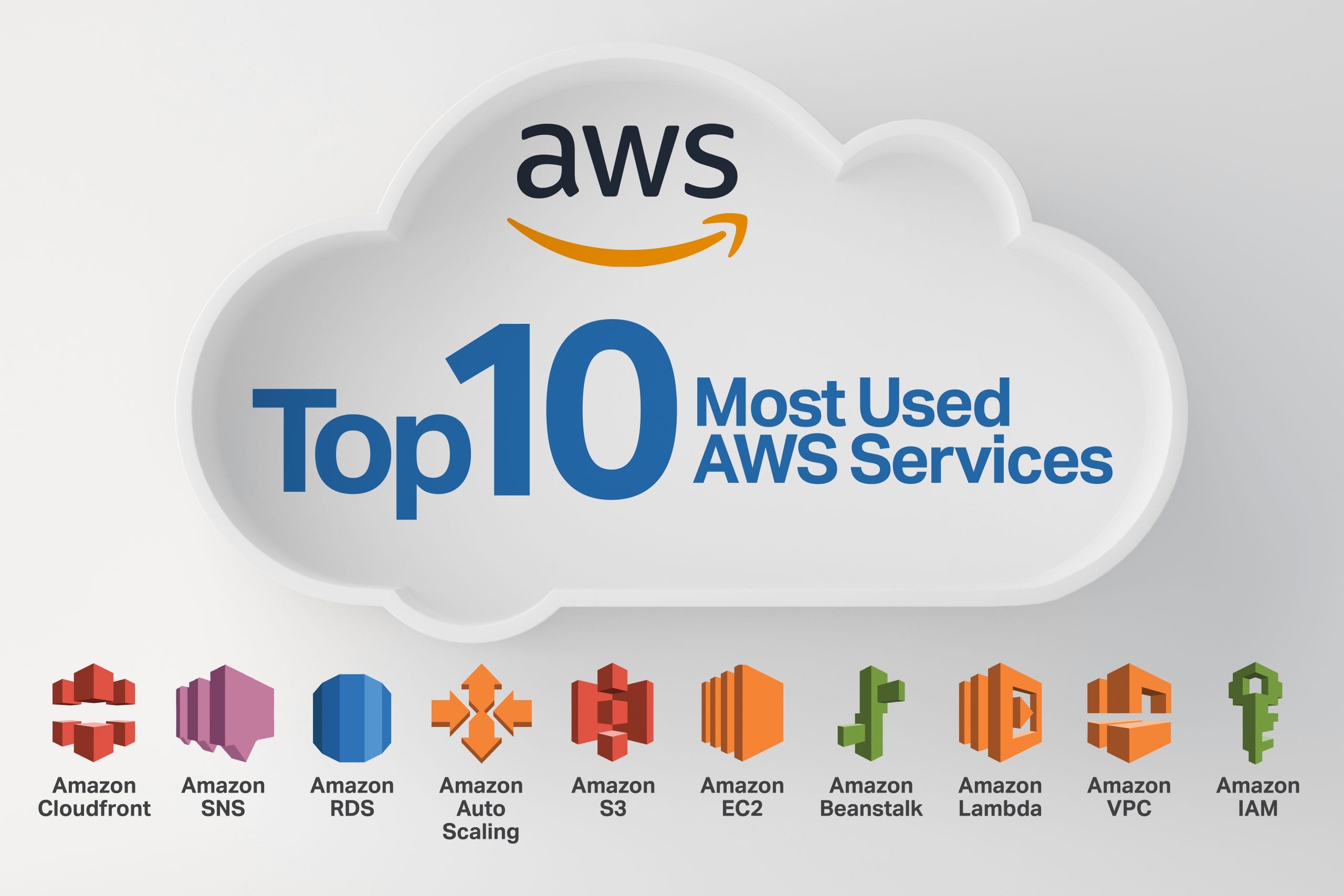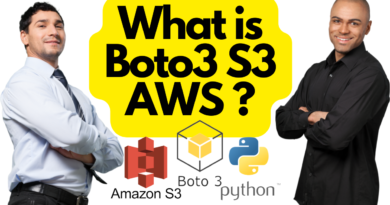AMAZON WEB SERVICES (AWS) FOR BEGINNERS
Amazon Web Services (AWS) is a subsidiary of Amazon. It provides on-demand cloud computing platforms and APIs to individuals, companies, and governments, on a metered pay-as-you-go basis
What is Amazon Web Services?
Amazon Web Services fees are based on a combination of usage (known as a “Pay-as-you-go” model). This fee is for, hardware, operating system, software, or networking features chosen by the subscriber.

Amazon Web Services, in other words, AWS offers many different tools and solutions for enterprises and software developers. These can be used in data centers in up to 190 countries. For example, groups such as government agencies, education institutions, nonprofits and private organizations can use AWS services.
Amazon Web Services: Example
For instance, Amazon Web Services offers a broad set of global cloud-based products including compute, storage, databases, analytics, and networking. Additionally, mobile, developer tools, management tools, IoT, security, and enterprise applications: on-demand, available in seconds, with pay-as-you-go pricing. Thus, from data warehousing to deployment tools, directories to content delivery, over 200 AWS services are available
What is cloud computing?
Basically, AWS is separated into different services; each can be configured in different ways based on the user’s needs.
Fir of all, Cloud computing is the on-demand delivery of IT resources over the Internet with pay-as-you-go pricing. Therefore, instead of buying, owning, and maintaining physical data centers and servers, you can access technology services, such as computing power and storage. In addition, databases, on an as-needed basis from a cloud provider like Amazon Web Services (AWS).
Benefits of Cloud Computing
Furthermore, with cloud computing, you don’t need to make large upfront investments in hardware. So, you don’t spend a lot of time on the heavy lifting of managing that hardware. Thus, instead, you can provision exactly the right type and size of computing resources you need to power. You can access as many resources as you need, almost instantly, and only pay for what you use.
In other words, Cloud computing provides a simple way to access servers, storage, databases and a broad set of application services over the Internet. After all, a cloud services platform such as Amazon Web Services owns and maintains the network-connected hardware required for these application services.
Hence, there are hundreds of services and tools that AWS offers on its cloud platform. Thus, to name a few, for example:
Featured Amazon Web Services
- Analytics
- Application Integration
- Blockchain
- Business Applications
- Cloud Financial Management
- Compute
- Contact Center
- Containers
- Database
- Developer Tools
- End User Computing
- Front-End Web & Mobile
- Game Tech
- Internet of Things
- Machine Learning
- Management & Governance
- Media Services
- Migration & Transfer
- Networking & Content Delivery
- Quantum Technologies
- Robotics
- Satellite
- Security, Identity, & Compliance
- Serverless
- Storage
- VR & AR
Amazon Web Services Six Advantages of Cloud Computing
- Trade fixed expense for variable expense – Instead of having to invest heavily in data centers and servers before you know how you’re going to use them, you can pay only when you consume computing resources, and pay only for how much you consume.
- Benefit from massive economies of scale – By using cloud computing, you can achieve a lower variable cost than you can get on your own.
- Stop guessing capacity – Eliminate guessing on your infrastructure capacity needs.
- Increase speed and agility – In a cloud computing environment, new IT resources are only a click away.
- Stop spending money running and maintaining data centers – Focus on projects that differentiate your business, not the infrastructure.
- Go global in minutes – Easily deploy your application in multiple regions around the world.
Cloud Computing Models: Infrastructure as a Service (IaaS), Platform as a Service (PaaS), and Software as a Service (SaaS)
Cloud computing models
Infrastructure as a Service (IaaS)
Infrastructure as a Service (IaaS) contains the basic building blocks for cloud IT and typically provides access to networking features, computers (virtual or on dedicated hardware), and data storage space.
Therefore, IaaS provides you with the highest level of flexibility and management control over your IT resources and is most similar to existing IT resources that many IT departments and developers are familiar with today.
Platform as a Service (PaaS)
Platform as a Service (PaaS) removes the need for your organization to manage the underlying infrastructure (usually hardware and operating systems) and allows you to focus on the deployment and management of your applications.
Hence, in addition, this helps you be more efficient as you don’t need to worry about resource procurement, capacity planning, software maintenance, patching, or any of the other undifferentiated heavy lifting involved in running your application.
Software as a Service (SaaS)
Software as a Service (SaaS) provides you with a completed product that is run and managed by the service provider. For example, in most cases, people referring to Software as a Service are referring to end-user applications. Thus, with a SaaS offering you do not have to think about how the service is maintained or how the underlying infrastructure is managed; you only need to think about how you will use that particular piece of software.
For instance, a SaaS application is web-based email which you can use to send and receive email without having to manage feature additions to the email product or maintain the servers and operating systems that the email program is running on.
Amazon Web Services Cloud Computing Deployment Models
Cloud
A cloud-based application is fully deployed in the cloud and all parts of the application run in the cloud. Hence, your applications in the cloud have either been created in the cloud or have been migrated from an existing infrastructure to take advantage of the benefits of cloud computing.
Furthermore, you can build cloud-based applications on low-level infrastructure pieces or use higher level services that provide abstraction from the management, architecting, and scaling requirements of core infrastructure.
Hybrid
A hybrid deployment is a way to connect infrastructure and applications between cloud-based resources and existing resources that are not located in the cloud.
Above all, the most common method of hybrid deployment is between the cloud and existing on-premises infrastructure to extend, and grow, an organization’s infrastructure into the cloud while connecting cloud resources to the internal system. For more information on how AWS can help you with your hybrid deployment, visit our Hybrid Cloud with AWS page.
On-premises
The deployment of resources on-premises, using virtualization and resource management tools, is called the “private cloud.” In most cases this deployment model is the same as legacy IT infrastructure while using application management and virtualization technologies to try and increase resource utilization.





